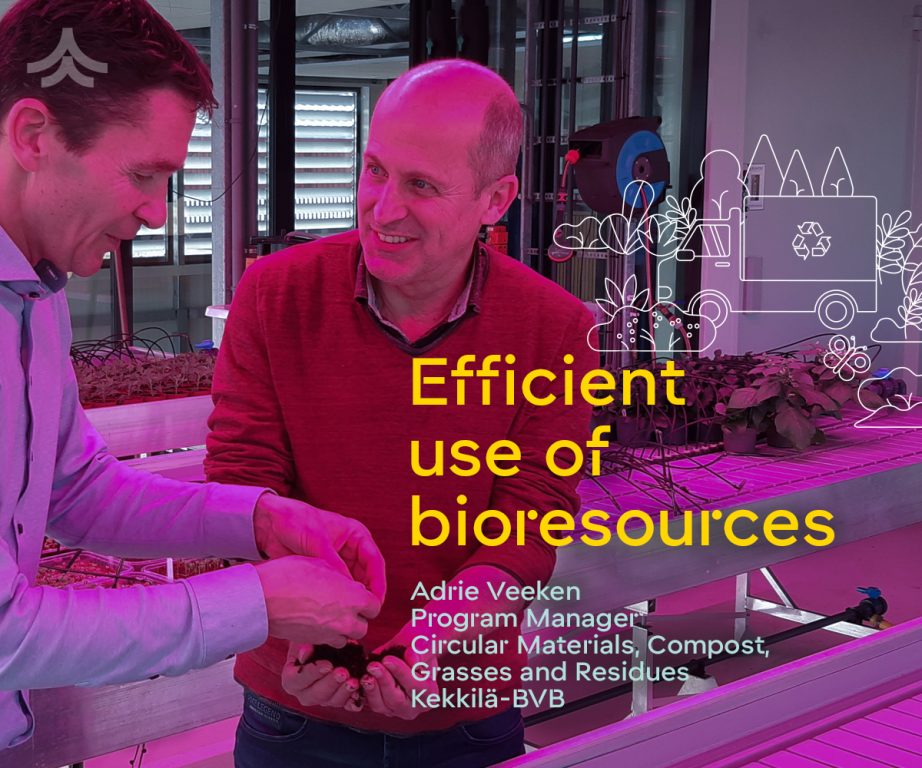Roadside grass – A new raw material for growing media?
In  our search for new local circular sustainable raw materials for growing media, roadside grasses have become one of our research priorities. Verge grass grows all over Europe and it is regularly harvested in most countries, including the Netherlands, so this raw material is expected to be plentiful available. Through cleaning, cutting, anaerobic digestion and composting, the grass is transformed into a new raw material that brings optimal properties to any future substrate.
our search for new local circular sustainable raw materials for growing media, roadside grasses have become one of our research priorities. Verge grass grows all over Europe and it is regularly harvested in most countries, including the Netherlands, so this raw material is expected to be plentiful available. Through cleaning, cutting, anaerobic digestion and composting, the grass is transformed into a new raw material that brings optimal properties to any future substrate.
Efficient use of bio-resources
Anaerobically digested roadside grass is the residual product after a fermentation process that produces biogas, a mixture of methane and carbon dioxide (or CH4 and CO2). During anaerobic digestion, the degradable part of the roadside grass decomposes. The cleaning process removes soil and if present contaminants such as plastics. Moreover, soluble salts are washed form the digestate. The solids are composted whereby the raw material is hygienised at high temperatures. This process also eliminates all weeds and excess water.
The integrated process results in a raw material that can be mixed with other raw materials to produce an optimal and sustainable substrate. The digestate contain safe values of heavy metals or residues of pesticides or herbicides.
_____________________________________
Benefits of anaerobically digested roadside grass
The raw material is local, recyclable and rich in organic matter. The low salt content, the dense structure of the grass fibres and the good water retention capacity may make this well-stabilised material one of the most important raw materials for future food production.
______________________________________
A real circular process
The core added value of the anaerobic digestion process for road side grass is the two main streams produced by the process. In addition to the raw material for the growing media, the process produces biogas that can be upgraded to green gas to inject in the gas grid or use it as transport fuels for trucks and ships. As yet another by-product, roadside grass could produce fertilisers by recovering nutrients such as potassium and ammonium from the water. Kekkilä-BVB already has experience of producing ecological fertilisers in Finland from composted green waste from greenhouses.
Part of EU LIFE research project 
Cooperation with other partners in the supply chain speeds up the research and development process. Kekkilä-BVB is involved in a research project that this year received a five-year grant from the EU’s LIFE programme to study the usefulness of anaerobically digested roadside grasses as a growing medium. The research work started five years ago and we are very optimistic that roadside grasses will be one of the future raw materials for potting soil. According to research by Wageningen University and the study, the digestate of roadside grasses is proving to be a particularly suitable complementary raw material for potting soil. The first products are expected to be available in retail outlets in a couple of years. The EU LIFE-funded project will build a anaerobic digester.
The roadside grass digester to be built on the Leeuwarden energy campus will convert 30,000 tonnes of roadside and natural grass into four products: green gas, raw material for potting soil, biogenic carbon dioxide and fertiliser.
Read more about the project, where D4 is in charge of project development. The biogas company HoSt will design and build the digester. Kekkilä-BVB will develop and purchase the digestate as a growing medium raw material. Leeuwarden mono-berm grass digester receives European LIFE climate change grant (in Dutch)
For more information contact adrie.veeken@kekkila-bvb.com
Adrie Veeken, Program Manager, Circular Materials, Compost, Grasses and Residues
Kekkilä-BVB